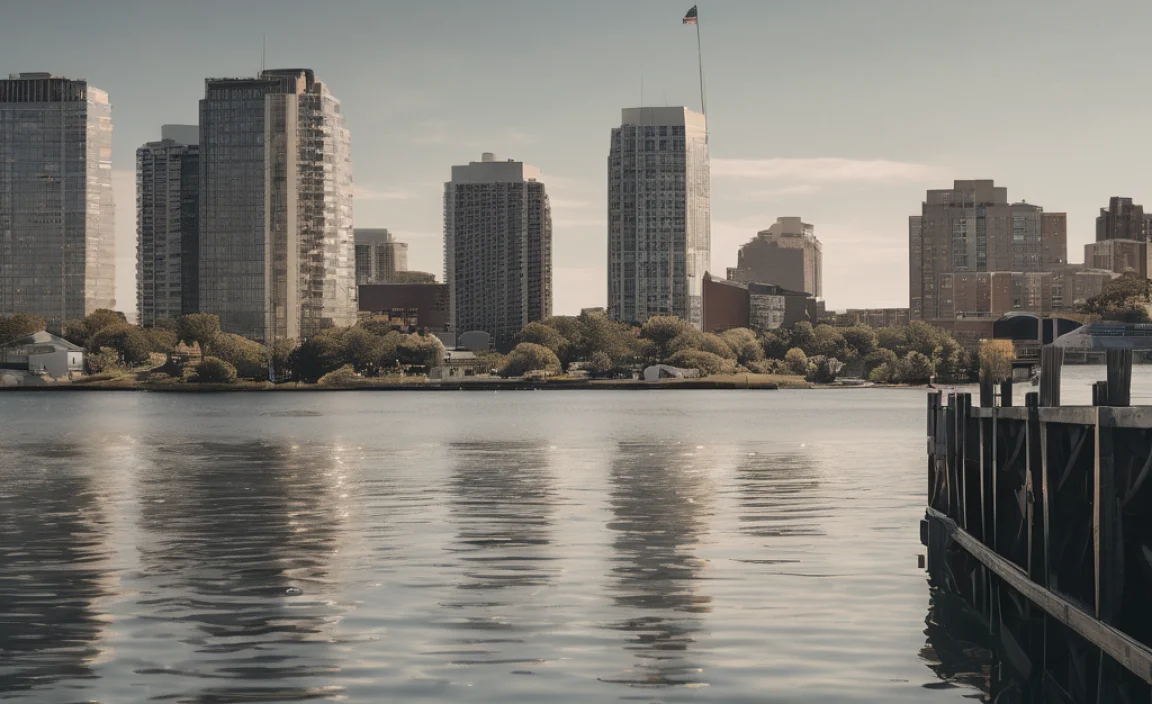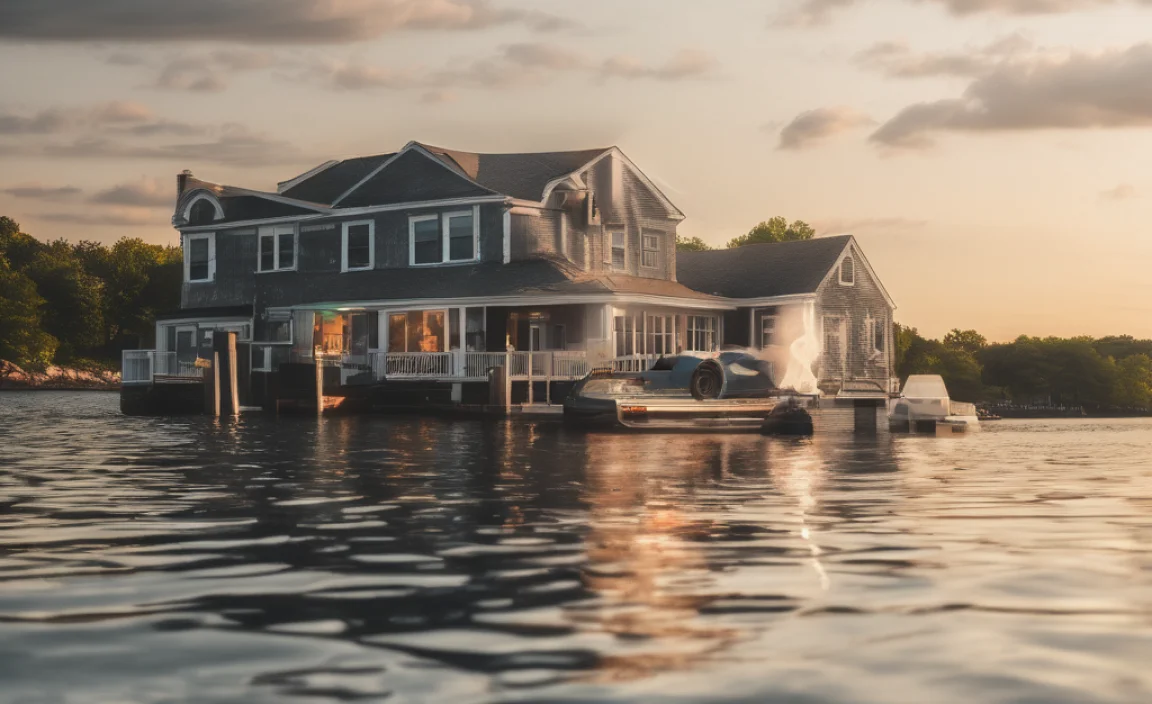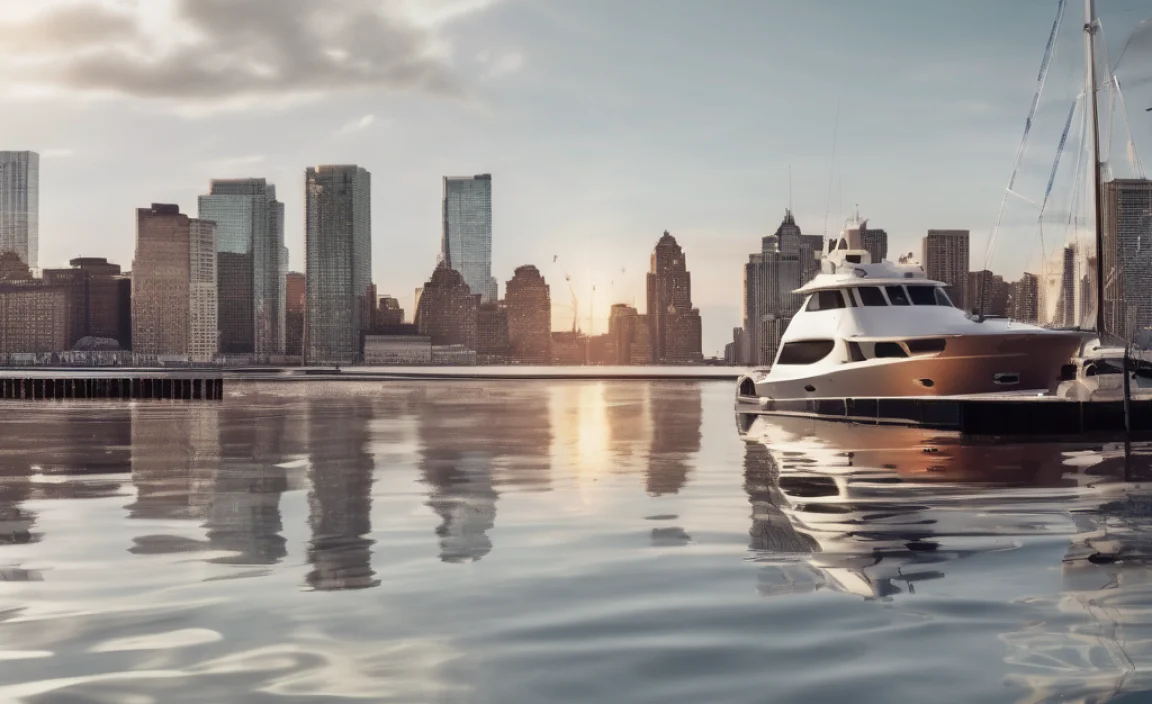Quick Summary: While Long Island isn’t sinking in the dramatic sense, it is experiencing relative sea-level rise. This means the land is either slowly sinking (subsiding) or the sea is rising, or a combination of both. The rate varies by location, but it’s a real concern that requires attention and action. Let’s explore what’s happening and what it means for you.
Worried about rising tides creeping closer to your Long Island home? You’re not alone! It’s easy to feel a little anxious when you hear talk about land sinking and sea levels rising. The good news is, you don’t need to panic. We’re here to break down the situation in simple terms. We’ll look at what’s *really* happening with Long Island’s elevation, and what you can do to stay informed and prepared. We’ll cover the science, the impacts, and what the future might hold. Let’s dive in!
Is Long Island Sinking? Understanding the Issue

The term “sinking” can be misleading. Long Island isn’t disappearing into the ocean overnight. The more accurate term is “relative sea-level rise.” This means that the sea level is rising relative to the land. This can happen because the sea level is going up, the land is going down (subsidence), or a combination of both.
What Causes Relative Sea-Level Rise?
Several factors contribute to this phenomenon:
- Global Sea-Level Rise: This is primarily caused by thermal expansion of ocean water (as it warms, it expands) and the melting of glaciers and ice sheets due to climate change.
- Subsidence: The land itself can sink due to natural geological processes or human activities.
- Glacial Rebound: The Earth’s crust is still adjusting from the weight of the ice sheets that covered the area during the last ice age. Areas that were under the ice are now rising (rebounding), while areas on the periphery, like Long Island, are sinking.
How Much Is Long Island Sinking (or the Sea Rising)?
The rate of relative sea-level rise varies across Long Island. The New York State Department of Environmental Conservation (DEC) provides data and projections for different regions. Generally, the rate of sea-level rise in the New York area is higher than the global average. According to a report by the New York State Sea Level Rise Task Force, sea levels around New York City and Long Island are projected to rise between 8 and 30 inches by the 2050s, compared to the levels from 2000 to 2004. By the end of the century, the projections range from 18 to 75 inches, or even higher under extreme scenarios.
The Science Behind the Subsidence

Let’s dig into the science behind the sinking, and how it all relates to the ice age.
Glacial Isostatic Adjustment
During the last Ice Age, massive ice sheets covered much of North America. The weight of these ice sheets depressed the Earth’s crust. Since the ice has melted, the land that was under the ice is slowly rising (rebounding). This is called glacial isostatic adjustment (GIA). However, areas at the edge of the ice sheet, like Long Island, are experiencing the opposite effect – they are sinking as the land further north rebounds.
How GIA Affects Long Island
Imagine a seesaw. When the ice was present, the areas under the ice were pushed down, and the areas at the edge were pushed up slightly. Now that the ice is gone, the areas under the ice are rising, and the areas at the edge are sinking. This process is very slow, but it is a significant contributor to relative sea-level rise on Long Island. The land is sinking at a very slow rate, but when combined with rising sea levels, it exacerbates the problem of coastal flooding and erosion.
Impacts of Sea-Level Rise on Long Island

The effects of relative sea-level rise are already being felt on Long Island. It’s not just a problem for the future; it’s impacting communities now.
Coastal Erosion
Rising sea levels lead to increased coastal erosion. Beaches and shorelines are being washed away, threatening homes, infrastructure, and natural habitats. Higher water levels also allow waves to reach further inland, causing more damage during storms.
Increased Flooding
Even minor storms can now cause flooding in areas that never flooded before. Higher sea levels mean that storm surges are higher and reach further inland. This can damage homes, businesses, and infrastructure, and disrupt daily life.
Saltwater Intrusion
As sea levels rise, saltwater can infiltrate freshwater aquifers, which are essential sources of drinking water. This can contaminate the water supply and make it unusable. Saltwater intrusion can also harm agricultural land, making it difficult to grow crops.
Loss of Wetlands
Coastal wetlands are vital ecosystems that provide habitat for wildlife, protect shorelines from erosion, and filter pollutants. Rising sea levels are inundating these wetlands, causing them to disappear. This loss of wetlands has significant ecological and economic consequences.
Threat to Infrastructure
Roads, bridges, wastewater treatment plants, and other critical infrastructure are at risk from rising sea levels and increased flooding. Damage to infrastructure can disrupt transportation, communication, and essential services.
What Can Be Done? Mitigation and Adaptation Strategies
While we can’t stop relative sea-level rise entirely, there are steps we can take to mitigate its impacts and adapt to the changing environment.
Mitigation: Reducing Greenhouse Gas Emissions
The most important thing we can do to slow down sea-level rise is to reduce greenhouse gas emissions. This requires a global effort to transition to cleaner energy sources, improve energy efficiency, and reduce deforestation. Here are a few simple things you can do at home:
- Use less energy: Turn off lights when you leave a room, unplug electronics when you’re not using them, and use energy-efficient appliances.
- Drive less: Walk, bike, or take public transportation whenever possible.
- Eat less meat: Meat production is a significant source of greenhouse gas emissions.
- Support policies that reduce emissions: Vote for candidates who support climate action.
Adaptation: Protecting Communities
Even if we reduce greenhouse gas emissions, sea levels will continue to rise for some time due to the warming that has already occurred. Therefore, it is essential to adapt to the changing environment. Here are some adaptation strategies that can be implemented on Long Island:
- Coastal armoring: Building seawalls, bulkheads, and other structures to protect shorelines from erosion.
- Beach nourishment: Adding sand to beaches to replace what has been lost to erosion.
- Elevating homes and businesses: Raising structures above the expected flood level.
- Improving drainage systems: Upgrading drainage systems to handle increased rainfall and flooding.
- Protecting and restoring wetlands: Wetlands can act as natural buffers against storm surges and erosion.
- Managed retreat: Moving development away from vulnerable coastal areas.
Individual Actions: Protecting Your Home
There are also steps that individual homeowners can take to protect their properties from the impacts of sea-level rise:
- Assess your risk: Determine your property’s vulnerability to flooding and erosion.
- Elevate utilities: Raise electrical panels, water heaters, and other utilities above the flood level.
- Install flood vents: Flood vents allow water to flow in and out of your foundation, reducing the risk of structural damage.
- Improve drainage: Make sure your property has good drainage to prevent water from pooling around your foundation.
- Plant native vegetation: Native plants can help stabilize soil and prevent erosion.
- Consider flood insurance: Flood insurance can help you recover from flood damage.
Long-Term Projections and Planning
Planning for the future is crucial. Understanding the long-term projections for sea-level rise is essential for making informed decisions about development, infrastructure, and coastal management.
Understanding the Data
The New York State Department of Environmental Conservation (DEC) and other agencies provide data and projections for sea-level rise in the region. These projections are based on climate models and historical data. It is important to understand the range of possible scenarios and plan for the most likely outcomes.
Long Island’s Future
Long Island faces significant challenges from relative sea-level rise. However, by taking action to reduce greenhouse gas emissions, adapt to the changing environment, and plan for the future, we can protect our communities and ensure a sustainable future for Long Island. This requires a collaborative effort from government, businesses, and individuals.
Tools and Resources for Homeowners
Here are some tools and resources that can help you assess your risk and take action to protect your property:
- FEMA Flood Maps: These maps show the flood risk for different areas. You can use them to determine your property’s flood zone. FEMA Flood Map Service Center
- New York State Department of Environmental Conservation (DEC): The DEC provides information and resources on sea-level rise and coastal management. NYS DEC Website
- Coastal Resilience Tools: These tools can help you assess your vulnerability to coastal hazards and identify adaptation strategies. EPA Coastal Adaptation Resources
Case Studies: Communities Taking Action
Many communities on Long Island are already taking action to address the challenges of relative sea-level rise. Here are a few examples:
- The Village of Greenport: Has implemented a comprehensive coastal management plan that includes measures to protect shorelines, improve drainage, and elevate structures.
- The Town of Southampton: Is working to restore coastal wetlands and implement beach nourishment projects.
- Suffolk County: Is investing in infrastructure upgrades to protect wastewater treatment plants and other critical facilities.
The Role of Government and Policy
Government plays a crucial role in addressing the challenges of relative sea-level rise. This includes developing policies, providing funding, and coordinating efforts across different agencies and levels of government.
Local Government Initiatives
Local governments can implement zoning regulations, building codes, and other policies to reduce vulnerability to sea-level rise. They can also invest in infrastructure improvements and promote sustainable development.
State Government Programs
State governments can provide funding for coastal protection projects, develop sea-level rise projections, and establish policies to reduce greenhouse gas emissions.
Federal Government Support
The federal government can provide funding for research, monitoring, and adaptation projects. It can also establish national policies to address climate change and sea-level rise.
Economic Considerations
Addressing the challenges of relative sea-level rise requires significant investment. However, the costs of inaction are even greater. The economic impacts of sea-level rise can include damage to property, disruption of businesses, loss of tourism revenue, and increased healthcare costs.
Cost-Benefit Analysis
It is important to conduct cost-benefit analyses to evaluate the effectiveness of different adaptation strategies. This can help decision-makers prioritize investments and allocate resources efficiently.
Funding Sources
Funding for adaptation projects can come from a variety of sources, including government grants, private investment, and insurance payouts.
The Future of Long Island’s Coastline
The future of Long Island’s coastline depends on the actions we take today. By reducing greenhouse gas emissions, adapting to the changing environment, and planning for the future, we can protect our communities and ensure a sustainable future for Long Island.
Technological Innovations
New technologies are being developed to help us address the challenges of relative sea-level rise. These include advanced monitoring systems, innovative building materials, and new approaches to coastal management.
Community Engagement
Engaging the community in the planning process is essential for ensuring that adaptation strategies are effective and equitable. This includes providing opportunities for public input, educating residents about the risks of sea-level rise, and empowering them to take action.
Long Island Sinking? A Summary Table
Here’s a quick table summarizing the key points we’ve covered:
| Topic | Description |
|---|---|
| Relative Sea-Level Rise | The sea level is rising relative to the land. This can be due to rising sea levels, sinking land (subsidence), or a combination of both. |
| Causes | Global sea-level rise (thermal expansion and melting ice), subsidence, and glacial isostatic adjustment. |
| Impacts | Coastal erosion, increased flooding, saltwater intrusion, loss of wetlands, and threats to infrastructure. |
| Mitigation | Reducing greenhouse gas emissions to slow down sea-level rise. |
| Adaptation | Protecting communities through coastal armoring, beach nourishment, elevating structures, and improving drainage systems. |
| Individual Actions | Assessing risk, elevating utilities, installing flood vents, improving drainage, planting native vegetation, and considering flood insurance. |
FAQ: Your Questions Answered
1. Is my home on Long Island going to be underwater soon?
Probably not *soon*. But, sea levels are rising, and coastal flooding is becoming more frequent and severe. It’s wise to understand your property’s risk and take steps to protect it.
2. What does “relative sea-level rise” actually mean?
It means the sea is getting higher compared to the land. This can happen if the sea rises, the land sinks, or both.
3. Can anything be done to stop Long Island from sinking?
We can’t stop the glacial isostatic adjustment, but we *can* reduce greenhouse gas emissions to slow down global sea-level rise.
4. What’s the first thing I should do to protect my home?
Check FEMA’s flood maps to see your property’s flood risk. Then, consider simple steps like elevating utilities and improving drainage.
5. Is flood insurance really necessary?
If you’re in a flood zone, absolutely. Even if you’re not, it’s worth considering, as storms can be unpredictable.
6. Are certain areas of Long Island more at risk than others?
Yes, low-lying coastal areas are the most vulnerable to sea-level rise and flooding.
7. Who can I contact for more information about protecting my home?
Your local town or village government, the New York State Department of Environmental Conservation, or a qualified coastal engineer.
Conclusion
So, is Long Island sinking? The answer is nuanced. While it’s not sinking in a catastrophic way, the combination of rising sea levels and land subsidence presents a real and growing challenge. The good news is, by understanding the science, taking proactive measures, and working together as a community, we can mitigate the impacts and protect Long Island for future generations. Don’t feel overwhelmed. Start by assessing your personal risk, explore available resources, and take manageable steps to safeguard your home and community. You’ve got this!

